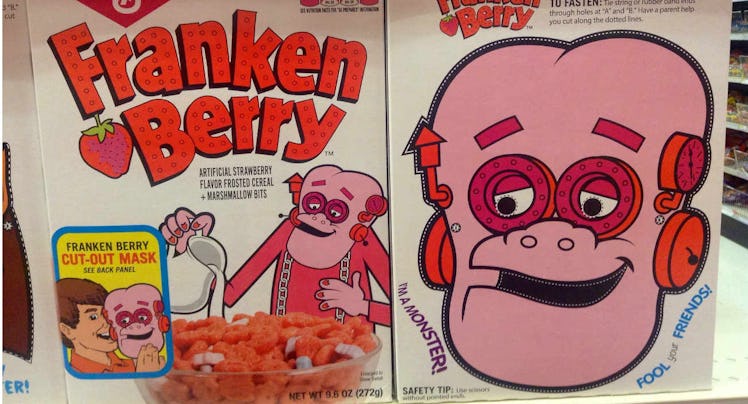‘Franken Berry Stool’ Was An Actual Medical Condition That 70s Parents Dealt With
You are what you eat.

For parents, your kid’s poop functions as a weird mood ring — the color alone can mean the difference between a good day and a nightmare. But as Atlas Obscura recently pointed out, you’re lucky you weren’t raising kids during the great pink poop scare of 1971 that rocked the cereal industry. And yes, you read that correctly.
In March of 1971 General Mills launched a line of “Monster Cereals,” featuring Count Chocula, and more importantly, Franken Berry, who got his strawberry start with synthetic dyes that pass through the body undigested. The specific ingredient that started tinting number 2s was conveniently called Red Dye Number 2. Coincidence? Sure, but one that sent many parents into a state of panic.
YouTube / dianamherrera
By 1972, pink poop was such a problem in kids that it was the subject of case study published in the journal Pediatrics, which followed a 12-year-old boy. After running every possible test on the strawberry ice cream-colored stool (their words), attending physician John V. Payne did something that probably seemed slightly insane at the time. Once the boy’s digestive tract cleared, Dr. Payne fed him 4 bowls of Franken Berry cereal. Sure enough, his poop promptly returned to pink and the condition “Franken Berry Stool” was born.
By the time the condition was named, the culprit that had created this monster was already being switched to Red Dye Number 40 — a much older and wiser food coloring. Today General Mills has replaced artificial coloring with natural coloring in 75 percent of their cereals, and hopes to eliminate it completely by 2017. So if you want to mess with your kid’s poop color (hint: you don’t), you’re going to have to do it the natural way: Beets for breakfast.